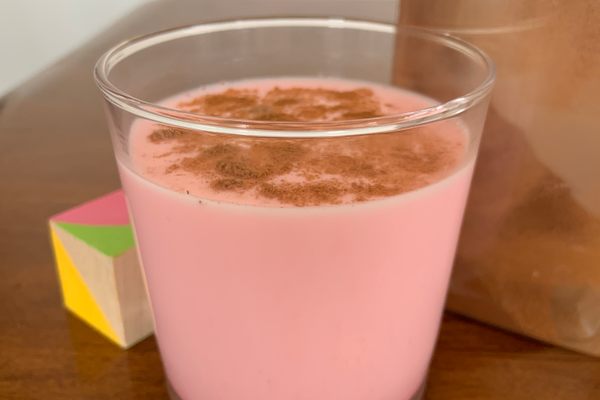After three days of celebrations at an Indian wedding, perhaps you’ve reached your limit on food. Just when you think you’ll never eat again, you see a woman’s outstretched arm. Her hand, covered in intricate henna patterns from the previous day’s mehndi ceremony, holds a plate of purple-black orbs flecked with gold leaf. She passes you the stack of kala jamun.
Sweet rosewater perfume—or is it cardamom?—wafts up from the tray. You pick up a sphere, sticky syrup coating your fingers, and crunch into the deep-fried exterior. It tastes of caramelized milk and sugar.
Made of soft cheeses, such as paneer and cottage cheese, along with evaporated milk solids like khoya and fillings like pistachios or dried fruit, each fried ball of kala jamun is a decadent mouthful. Bakers knead flour into the dairy products, roll the mixture into balls, and deep-fry them. Upon frying, the batter turns a blackish color, giving these treats their namesake hue (kala means “black” in Hindi). Afterward, chefs soak the hot treats in syrup flavored with cardamom, rose, and saffron.
Kala jamun is a darker, drier variation of another popular Indian sweet called gulab (“rose”) jamun. The latter is fried at lower temperatures, then lightly fried in rose sugar syrup. It’s soft, with a golden center, and best served hot. Kala jamun, on the other hand, has a rougher texture and is most often served at room temperature.
In India, celebrants serve both kala and gulab jamun on special occasions. But just eating one of these sweet, fragrant orbs is an occasion all its own.
Written By
 rachelrummel
rachelrummel
Sources
- food.ndtv.com/food-drinks/kala-jaam-the-sweet-that-looks-like-gulab-jamun-but-isnt-1727308
- www.spoonforkandfood.com/kala-jamun
- www.sanjeevkapoor.com/Recipe/Kala-Jamun-Mithai-amp.html
- www.cookingandme.com/2013/10/20/chenna-recipe-how-to-make-chenna-sweet/
- www.vahrehvah.com/kala-jamun
- www.theknot.com/content/hindu-wedding-guest-qa
















